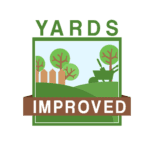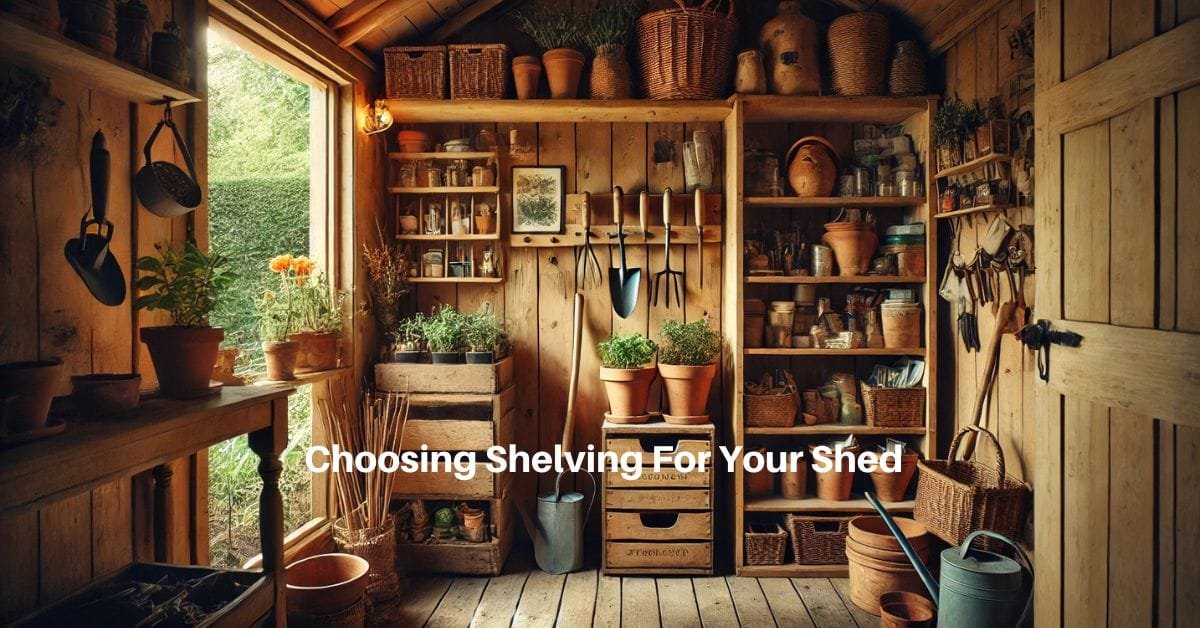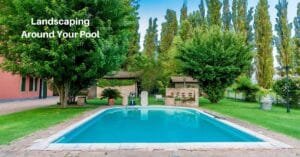A well-organized backyard shed is great for storage. It also serves as a hub for efficiently caring for your lawn and garden. Outfitting it with sufficient and durable shelving can make all the difference in how useful your shed becomes. By investing time in planning your shelving system, you’ll transform a cluttered space into a functional, accessible area.
In this article, we’ll explore everything you need to know about shed shelving, from selecting materials to installation options. We hope it helps you make the right choices to get the most out of your garden shed!
Purpose and Functionality
Understanding the purpose of your shed and the items you need to store is key to designing a functional shelving system. For example, a gardening shed might require different shelving than a tool or storage shed. By tailoring the shelves to the specific purpose of the shed, you can ensure efficient organization and easy access to your most-used items.
- Garden Sheds:
Shelves in garden sheds can hold tools, fertilizers, pots, seeds, and other gardening supplies. Create open shelves for easy access to frequently used items and deep shelves for storing bulky items like bags of soil or compost. A pegboard or hanging hooks are also great for storing small tools and rakes. - Tool Sheds:
For tool sheds, it’s important to have sturdy, reliable shelving that can handle heavy-duty items. Consider metal shelving or custom-built wooden shelves for larger tools like shovels, drills, and other equipment. Specialized bins, hooks, or smaller bins for screws, nails, and other fasteners can help keep tools organized and accessible. - Storage Sheds:
A general storage shed may require shelves for seasonal items, camping gear, or outdoor toys. Wire shelving or adjustable plastic shelving can be a good choice, as they’re easy to install and provide visibility for various types of items.
Choosing the Right Materials
When selecting materials for shed shelving, consider durability, maintenance, and suitability for your shed’s environment. Wood, metal, and plastic are the most common options; each has distinct advantages and potential drawbacks:
- Wood:
Wood is a timeless choice, offering a natural, polished look. It’s ideal if you need shelves capable of handling heavy loads but also want something that looks great. Treated wood resists rot and insect damage, making it a great option for sheds exposed to moisture. However, untreated wood may warp or deteriorate over time, especially in humid conditions. - Metal:
Metal shelving is known for its strength and longevity. Powder-coated steel or aluminum shelves resist corrosion and are perfect for storing heavier items such as power tools. However, metal shelves can be more expensive. They may also need to be anchored to the wall or floor for added stability. - Plastic:
Plastic shelves are lightweight and resistant to moisture. They’re a cost-effective solution for sheds in wet or humid climates. They’re generally easier to assemble than the alternatives, too. However plastic shelves don’t hold up as well to heavy loads. Still, they’re fine for general use!
Be sure to consider what you plan to store and the climate when choosing the type of shelves you want. Of course, budget matters too, but we recommend you get the best you can so that the shelves will hold up. Remember, if the shelves aren’t strong enough, you could be replacing them soon – but even worse, you could face damage to what was stored on them!
DIY vs. Store-Bought Shelving Solutions
You can also choose whether to get pre-made shelving units or build them yourself. This choice depends on your needs and your skill level!
- DIY Shelving:
Building your own shelves allows customization to fit your shed’s unique dimensions and storage requirements. With DIY, you can choose the materials, adjust the height and depth, and create solutions like corner shelves or wall-mounted units, if your shed’s structure can support them. DIY shelving can be cost-effective, especially if you use reclaimed wood or other upcycled materials. However, it requires tools, time, and skill to ensure stability and safety. - Store-Bought Shelving:
Pre-made shelves are convenient and come in various styles, materials, and sizes. Many options are modular, so you can expand or reconfigure them whenever you want. They save time and effort, although store-bought shelving might not perfectly fit your shed’s dimensions or storage needs. Also, higher-quality units can be expensive; they may be worth it, though, since they offer durability and ease of assembly.
Integrated vs. Freestanding Shelving
The layout of your shed and the items you plan to store are also important considerations in what kind of shelving you add. You may want units that are attached to the walls in some cases, but sometimes free-standing shelving is more appropriate.
- Integrated (Wall-Mounted) Shelving:
Wall-mounted shelving will help you maximize vertical space. That means the floor space is clear for larger items like lawnmowers or bikes. This type of shelving is secured directly to the shed walls. This makes the shelves sturdy and capable of holding heavier items. However, they require a strong structural base, such as studs, and might not be suitable for sheds with thin or poorly constructed walls. - Freestanding Shelving Units:
Freestanding shelves are versatile and do not require wall support. That’s fantastic for sheds with weaker walls or if you like to reorganize occasionally. They are easy to move and can be adjusted for different needs. However, they may occupy more floor space and may tip over if not anchored securely.
Of course, you may combine mounted shelves and freestanding units for greater flexibility!
Designing for Storage Efficiency
Efficient shelving design ensures that every inch of your shed is utilized effectively. Here are some tips to optimize your storage layout:
- Adjustable Shelves:
Opt for shelving units with adjustable heights to accommodate items of varying sizes, from small containers to tall garden tools. - Use Vertical Space:
Install shelves all the way to the ceiling to maximize storage in smaller sheds. Use the uppermost shelves for items you don’t need regularly. - Group by Purpose:
Dedicate specific shelves or sections to particular categories, such as gardening tools, cleaning supplies, or seasonal decorations. This reduces clutter and makes items easier to find. - Incorporate Hooks and Pegboards:
Combine shelving with hooks or pegboards on the walls. Smaller items like hand tools or extension cords can often be stored more efficiently on hooks. - Ensure Accessibility:
Leave enough space between shelves so you can easily reach stored items. Keep a stepstool handy if you have a larger shed with high shelves.
By tailoring your shelving system to your specific storage needs, you can create a shed that’s both functional and easy to navigate.
Height and Number of Shelves
The height and number of shelves you install depend on the space in your shed and the items you plan to store. Careful planning will help you choose shelves that are both practical and easy to use.
- Height Considerations:
The height of your shelving units should take advantage of the vertical space in your shed but also allow for easy access. Shelves should have the heaviest items on lower shelves, and lighter or less frequently used items higher up. Of course, don’t waste the top shelf by having your shelves reach too close to the ceiling! - Number of Shelves:
The number of shelves you install depends on the available space and the storage space you need. For smaller sheds, plan shelves that provide ample storage without dominating the space. For larger sheds, more shelves can be added, but leave enough room to move around or access larger equipment. Adjustable shelves make it easier to change configurations as your storage needs evolve.
By defining the purpose of your shed and thinking about the types of items you’ll store, you can create an efficient and user-friendly shelving system that keeps everything organized and easily accessible.









